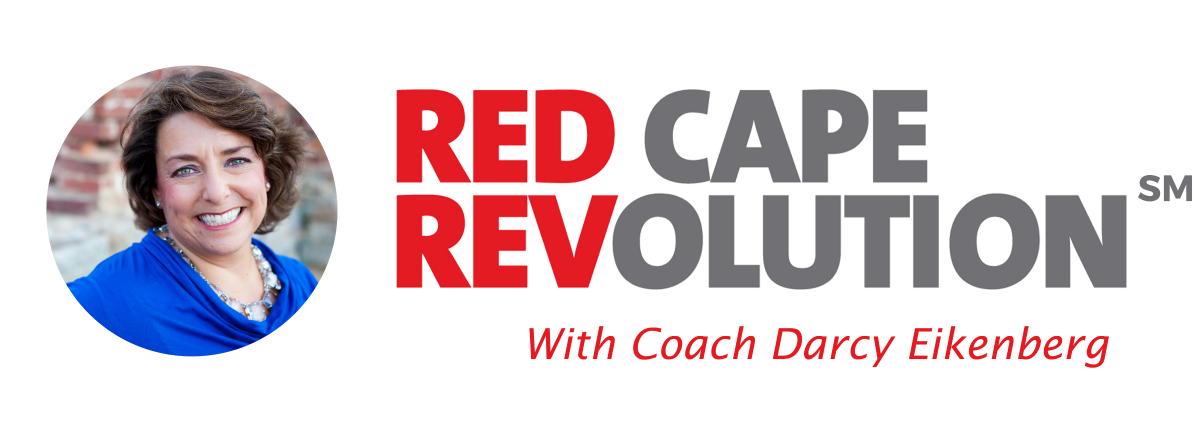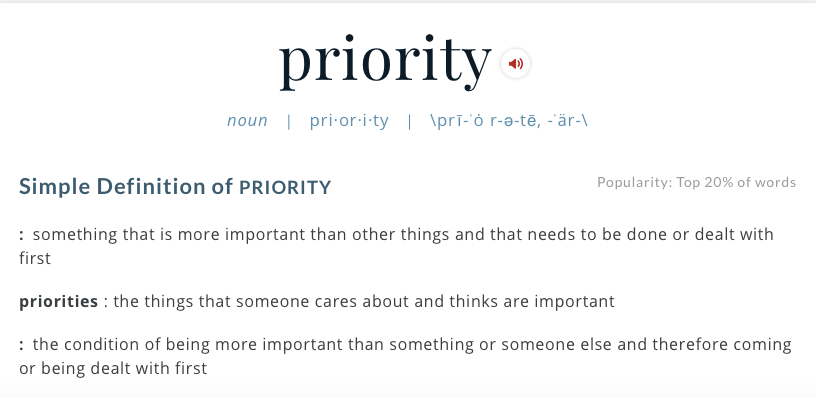My client came back to work after a fun, relaxing holiday break. She was revved and ready for action.
Until she made her to-do list and saw she had too many priorities–too many items all screaming to be first.
“I don’t know where to start,” she told me in our coaching conversation later that day. “It’s overwhelming, but it’s all important.”
BOOM. She fell into the trap.
You know the one. You’ve been there. I’ve been there. Anyone who wants to get a lot done and make a big impact, well, we’ve been there.
As smart people, we can make an argument that everything we possibly could do with our time, money and energy is important. Grow my team? Important. Clean the garage? Important. Review last year’s taxes? Important.
If it’s on your list, I bet you can rationalize why it’s important.
But if you find you’ve got too many priorities on your to-do list, it’s time for a fresh look.
Get career & work strategies like this directly in your inbox, for free. Add your name to our Insider’s List here and never miss a thing!
Help! I Have Too Many Priorities!
The Truth About the Word “Priority”
Merriam-Webster defines the word “priority” like this:
Something that is more important than other things and that needs to be done or dealt with first. (emphasis added)
The word “first” implies one thing. Not ten. Priority implies “get the one thing done first, then move on to the next.”
But you know this, right? Of course you do.
And you know that’s NOT how it’s working today.
You’re being asked/influenced/guilted/sold to make EVERYTHING a priority.
We’ve bastardized the use of the word “priority” to really mean “move this idea/project/concern to the head of the line, no matter what else is going on.”
That’s why the conversation about priorities is so frustrating. And so important.
What to Do When You Have Too Many Priorities
At this point, we could talk tactics about how to get stuff off your list. There’s the “defer, delegate, drop” strategy. And I’ve written about dropping the ball, dropping the waste, and dropping the guilt.
But there’s a bigger issue at play here.
If we want to get real about our priorities, we need to take a hard look at what we’re putting on that priority list. Here are four ways we can look at our priorities differently—and reduce the overwhelm that comes with trying to do everything, always.
1. Be honest
There’s that voice in your head that says “I should be able to do all of these things. If I can’t, something must be wrong with me.”
That voice is a liar.
That voice is a bully.
That voice isn’t you.
Take a second and call on your honest, true voice. You know you have one. Don’t discount it.
For my client, it’s the one that said, “I know in my gut that all of these priorities are too much. I won’t make significant progress on anything if I’m trying to focus on everything.”
The honest truth is that if you have too many priorities, you really have none.
So get clear on the truth first.
2. Love your limitations 
You’re awesome. You’re powerful. You can do anything you want.
But you can’t do everything you want all at the same time.
There are limitations in our careers and lives. We each have only so much time, money, energy, attention. Others we depend on to help achieve our priorities also have limits on their time, money, energy and attention.
We’re often taught not to pay attention to our limitations, to stretch our boundaries, to leap and the net will appear.
That’s just silly.
If you’re living in the real world, you have limitations. Thank goodness. Limitations keep us grounded and real—like gravity for our plans and ideas.
Once we accept and love our limitations, we can plan our work and lives within those, and not succumb to someone’s fantasy assumptions about what can get done in a day, week, or even a year.
I’m not saying not to stretch yourself. But recognizing our limits gives us more power to make better choices about what we say yes to, and what we say no to (scripts here).
3. Choose simple 
The human brain longs for simplicity. But the educated, professional brain keeps trying to make things more complicated.
Why? Because it can. Because we have a virtual Costco of ideas and opportunities in front of us for each and every priority we face.
Because there’s always one more “good idea.”
But what if it we decided to always choose simple? What might change in terms of what all these “priorities” look like?
For example:
- Which presentations can just be conversations? Maybe all you need to prepare is an agenda and a flip chart, rather than 45 boring PowerPoint slides.
- What activity can be made simpler by doing it with people you enjoy? Maybe it shifts from being a project to a party.
- Where are you assuming you have to have it all figured out, instead of identifying only the next logical step?
When we make things too complicated, we get overwhelmed and frustrated. Simplicity helps put our priorities in order.
4. Choose meaning 
Do each of the priorities on your list make a difference in ways that matter to YOU?
Do they support what you value? What you believe? The direction you’re taking your work, career and life?
If they’re not meaningful to YOU, you’ll never get them done.
Trust me. I’ve copied priorities from list to list to list, and they never get tackled. Why? Because if I’m honest, I really don’t care about them.
Oh, I hear you–
But I can’t ignore the work priorities set by someone else. Those have to be MY priorities too.
Really? Let’s face it–you know down deep which are meaningful, and which are bull.
You know which ones are simply “good ideas” that will never make a difference, or which ones have the possibility to create lasting, sustainable change.
Move the wasted ones to the “C” or “D” list. Wait for someone to ask about them. In my experience, the “good ideas” without true meaning and impact simply disappear.
And if you’re a leader, and your company keeps changing or adding priorities, it’s your job to speak up. Point it out. Ask for better, more meaningful reasons why we should take on the new initiative or focus. Suggest which other priority needs to be dropped to make room for this one.
Hey—want more help?
No matter what’s happening in your career, a 30-minute chat with me can show you how to get out of a funk and move forward, fast.
Just hit the button below, and pick a date and time that’s available. There’s nothing to prepare–just show up right where you are. If, after we talk, it sounds like one of my coaching programs or courses will help you going forward, I’ll share details after our call. There’s no pressure—my goal is to be helpful immediately.
Spots fill up fast, though, so schedule yours now and start getting the support you deserve.
Next for you:
Strategies to Find More Time at Work (Without Working More) [VIDEO]
“How Do You Take Control of Your Career?” Your Question Answered




